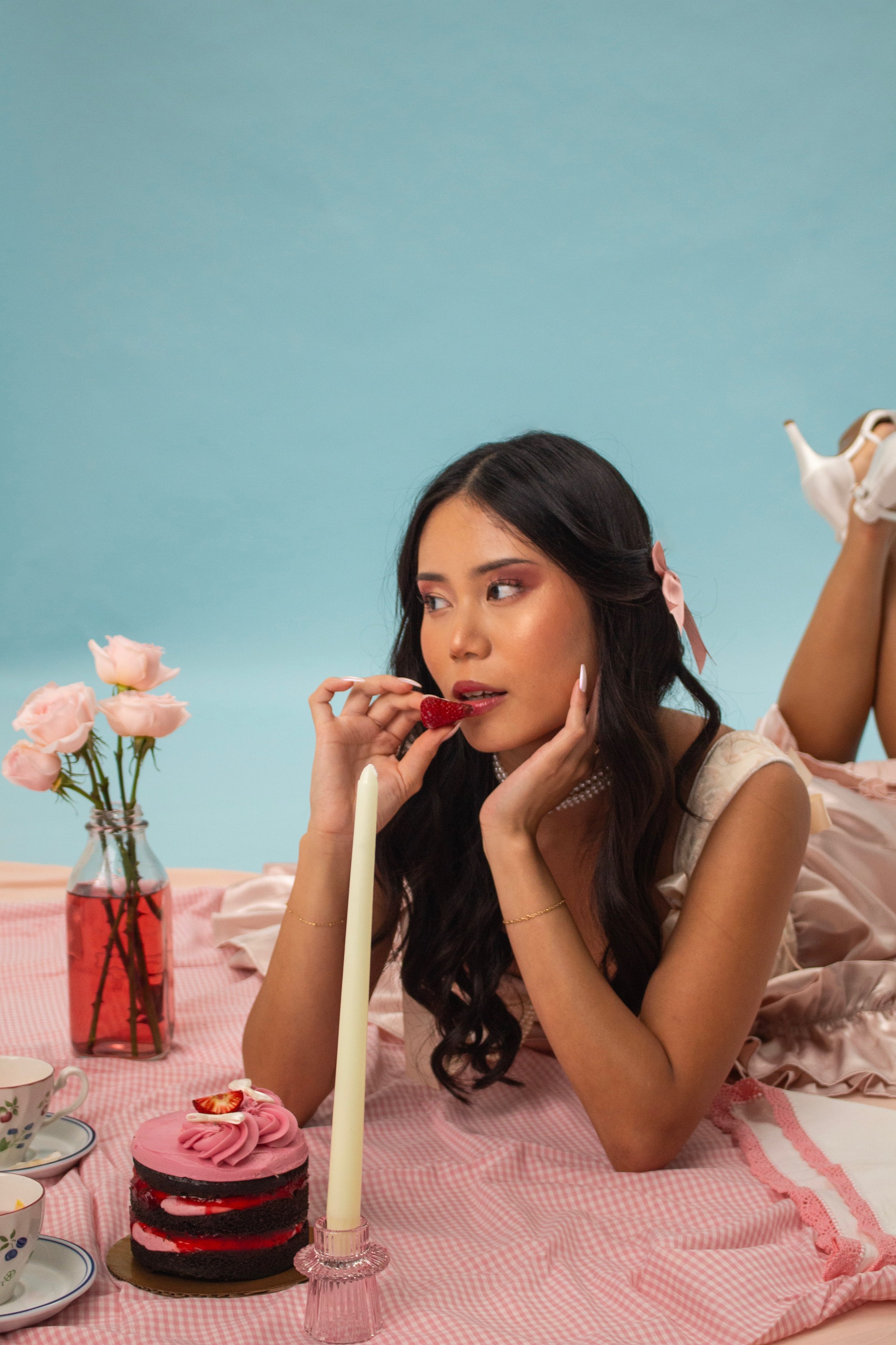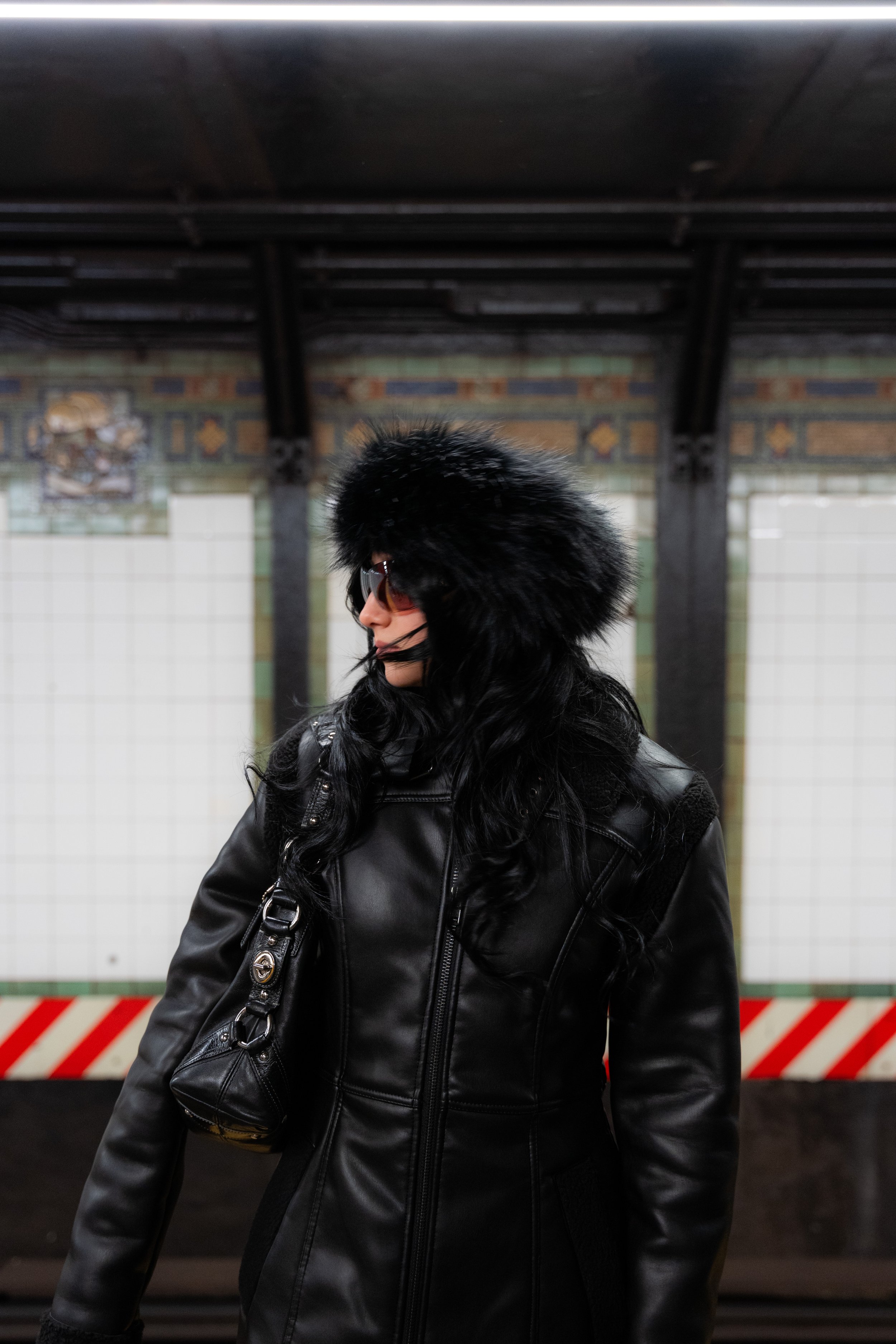To be a Woman
Models: Jessica Liu Photographer: Isabella Capuchino Stylist: Elizabeth Cox & Keturah Rollins; HMUA: Itzel Casillas; Set Designer: Lizvette Tapia
By Taylor Schult
The fashion industry has been around since the beginning of time. In fact, there is evidence of bone needles from 30,000 B.C. that were used to sew together clothing from animal hides, vegetable fibers, etc. And like most industries, it is expected that there will be progressions and improvements over time. How else are they supposed to keep up with a society that is ever changing? Yes — we can talk about all the ways the fashion industry has improved, and continues to get better — but something else entirely is being overlooked. We should talk about the discrimination and objectification that continues to plague this field, targeting the people that value it most: women.
We can start by addressing the gender gap in the fashion industry. According to an article by Not Just the Label, “more than 85% of majors from top fashion schools are female, but only 14% of the top major 50 fashion brands are run by women.” And this is not just some coincidence or luck of the draw. There are links between this and the expectation for women to stay in the home and raise a family. But, another shocking fact from the same article is that there are now fewer women CEOs of fashion companies than there are women CEOs in the aerospace and finance sectors. So essentially, there are more women in these male-dominated industries than in the fashion industry. With that in mind, women also contribute financially about 226% more than men. So, how is it that men still hold the power of major fashion houses?
It is about that exactly. Power.
Powerful men who are frightened by powerful women make this possible.
We can dig even further by discussing fast fashion. This, alone, has been exploiting women for decades. There is a long history of women being undervalued, and their low wages being overlooked when compared to their male counterparts, who are paid considerably more. Instead of viewing women as equals, they are seen as a business opportunity. More labor for less pay. Appealing, is it not?
Another problem that should be addressed is the objectification of women in the fashion industry. The more desirable a woman is, the greater her value is to the world. This is why things like “pretty privilege” exist. Product sales increase by the masses when you place conventionally attractive women at the center, using their bodies to increase numbers. Many companies know this to be true and take it into consideration with their marketing and publicity. Overly sexualized fashion ads have statistically done better than any other ones because of the images it can plant in your mind. Simply, sexual appeal sells.
Not only do men control what you wear, but they control how your body is seen, too.
They will tell women to cover up or to stop acting a certain way. If you do not want to be treated that way, change yourself. Find a different industry because this is just the way the fashion world works. Those who want to make it big will do whatever they have to in order to be successful. Easy for those in power to say when they have nothing to lose.
It has been said before, but it must be said again. It does not matter what women are wearing. They are not objects, or business deals, or cheap labor. They are people. Women have minds and hearts, not just bodies to be looked at. They have ideas and opinions, just like men. It is about so much more than how her hips might swing when walking down the runway or how the clothing hugs her curves. A woman’s value is not to be placed on her physical appearance. And, her success in the fashion world should not be based on that either.
Fashion is supposed to be a form of expression. One where you can experiment without fear of judgment. It is a way to make sense of the world, creating something that a younger version of yourself needs to see.
The article by Not Just the Label says this, “the first step to fixing any problem is realizing there is a problem.” They went on to say that 100% of women recognized that there are inequalities in the fashion industry, while only 50% of men came to the same conclusion. This alone is very telling. We have to stop viewing gender inequalities in and out of the fashion industry as something that women have to fix on their own. It is a societal issue. It is a global issue. And, it will take all of us realizing the weight of our power for change to finally be set in motion.
Works Cited:
Zubaviciute, I. (2021, March 30). A gender gap: Why do men still rule the (fashion) world?. NOT JUST A LABEL.
Research Links:



